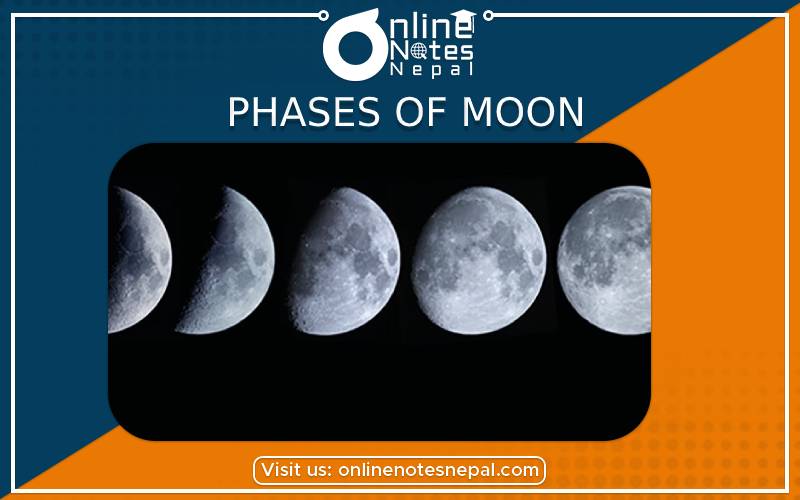Published by: Nuru
Published date: 16 Jan 2022

When we observe the sky daily for some days, we find that the moon changes its shape every day. It is called phases of the moon.
Phases of the moon occur because of following reasons:
When the moon forms an angle of 00 from the plane of earth’s orbit, the whole dark part of the moon faces towards the earth and hence any part of the moon is not seen i.e. is a new moon(m1). After 24 hours, when the moon forms an angle 120 from the plane of its orbit, a little bright part of the moon faces towards the earth and a minimum part of the moon is seen bright. It is called waxing crescent (m2).
When the moon forms an angle of 900, the bright part of the moon is seen in the form of the hemisphere which is called a first quarter (m3). When the moon forms an angle of 1680, very little part of the moon remains in the dark which is called waxing gibbous (m4). When the moon forms an angle of 1800 from the plane , the moon is seen completely round, which is called full moon.
When the moon forms an angle of 192 degree from the plane very little part is covered by the darkness and it is called waning gibbous (m6). When the moon forms an angle of 2700, the moon is seen in the form of hemisphere again, which is called last quarter (m7). When the moon forms an angle of 3840, very little part of the moon is seen in the sky and it is called wanning crescent (m8) . After completing an angle of 3600 by the moon in its orbit again new moon occurs.
Some interesting facts about the moon: